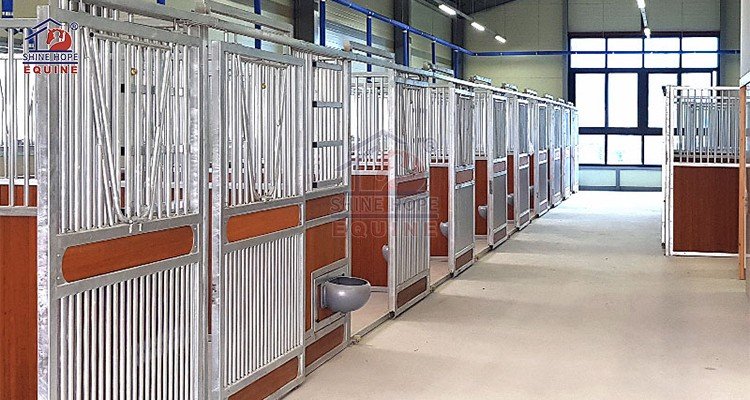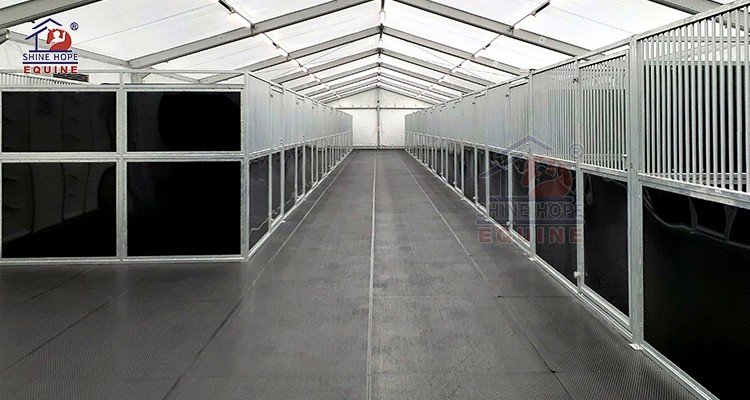What Is Horse Boarding?
Comprehensive Guide to Costs, Types, and Choosing the Right Facility
For horse owners—whether new or experienced—understanding horse boarding is essential for ensuring your equine companion’s well-being. Horse boarding refers to housing your horse at a professional facility, where they receive care ranging from basic shelter to full-service management. In this guide, we’ll explore what horse boarding entails, the different types available, typical costs, and key factors to consider when choosing a facility.

What Is Horse Boarding?
Horse boarding is a service where horse owners pay a facility to house and care for their horses. Beyond basic shelter (like a stall or pasture), services can include feeding, stall cleaning, turnout (time outdoors), grooming, and access to riding arenas. It’s a practical solution for owners who lack the space, time, or expertise to care for a horse at home, or those seeking access to specialized amenities like training or rehabilitation programs.
Types of Horse Boarding
Boarding options vary based on your budget, level of involvement, and your horse’s needs:
Full Board
Inclusions: Daily feeding (hay, grain), stall cleaning, turnout, basic grooming, and use of facilities (arenas, wash racks).
Best for: Owners who want professional care without daily hands-on responsibility, such as busy professionals or those living far from the barn.
Pros: Convenient, comprehensive care; ideal for horses needing structured routines.
Cons: Highest cost; less control over daily care specifics.
Partial or Self-Care Board
Inclusions: Stall or pasture space, water, and basic facilities. Owners provide feed, clean stalls, and handle turnout.
Best for: Budget-conscious owners or those who live nearby and want to manage their horse’s care personally.
Pros: Lower cost; hands-on involvement.
Cons: Requires time and consistency from the owner.
Pasture Board
Inclusions: Outdoor housing in a pasture with shelter (e.g., a shed) and access to water. Minimal daily care is provided.
Best for: “Easy keeper” horses that thrive in herd environments and don’t require stall access, especially in mild climates.
Pros: Most affordable; natural living conditions.
Cons: Less oversight; horses may be exposed to weather and pests.
Premium/Show Board
Inclusions: Full care plus specialized services like training, show preparation, rehabilitation, or access to heated indoor arenas.
Best for: Competitive riders or horses with specific health needs.
Pros: Top-tier amenities and expertise.
Cons: Highest cost; often requires long-term commitments.
How Much Does Horse Boarding Cost?
Boarding costs vary widely by location, services, and amenities. Below are general ranges in the U.S.:
Type of Board Average Monthly Cost
Pasture Board | $150 – $500 |
Partial Board | $300 – $700 |
Full Board | $500 – $1,500 |
Premium Board | $1,500 – $3,000+ |
For example, pasture boarding in a rural area might start at $150/month, while full care at a show barn with an indoor arena could exceed $2,000/month.

Choosing the Right Boarding Facility
Selecting a barn requires careful evaluation. Here’s what to prioritize:
For Your Horse’s Health and Safety
For Your Convenience and Goals
Why Board a Horse?
Lack of Space/Resources: Many owners can’t accommodate a horse at home due to land or zoning restrictions.
Professional Care: Full-board options provide peace of mind, especially for owners new to horse care or those with busy schedules.
Access to Amenities: Training arenas, clinics, and social events are often available at boarding facilities.
Community: Boarding barns foster connections with fellow equestrians, offering support and camaraderie.

Drawbacks to Consider
Cost: Boarding can be expensive, especially for full or premium services.
Limited Control: You rely on staff for daily care, which may not align perfectly with your preferences.
Time Commitment: Even with full board, regular visits are essential for bonding and monitoring your horse’s well-being.
FAQs About Horse Boarding
What’s the difference between pasture and stall boarding?
Pasture boarding keeps horses outdoors with shelter, while stall boarding provides indoor housing with daily turnout.
Can I bring my own feed?
Yes, especially with partial or self-care board. Some facilities may require approved feed to prevent dietary issues.
How do I handle emergencies at a boarding barn?
Ensure the barn has a protocol for contacting you and a vet in case of injury or illness. Keep emergency contacts updated.
Conclusion
Horse boarding offers flexibility and expertise, making it a viable option for many owners. Whether you opt for budget-friendly pasture board or full-service care, prioritize your horse’s health, your access to facilities, and the barn’s reputation. By understanding the types of boarding and associated costs, you can make an informed decision that benefits both you and your equine partner.
Need help finding a facility? Research local options like Dutch Stables, Sliding Stables, or Customized Stall, and always schedule a visit before committing. Your horse’s happiness starts with a safe, supportive home—whether in a stall or a pasture.
Shinehope Equine Email us at info@shinehopeequine.com or call +8613869898222.(24 hours).
(Expert insights provided by Dr. Jesslyn Bryk-Lucy, DVM, and Emerson Stanka, co-owner of San Francisco Stables.)
